Introduction
The journey of womanhood is marked by remarkable transformations, particularly when it comes to the belly and its health. From the extraordinary changes during pregnancy to the challenges posed by hormonal shifts in menopause, understanding these phases is crucial for empowering women to embrace their bodies.
As they navigate through:
- Stress
- Nutrition
- Exercise
- Sleep
the importance of a holistic approach to belly health becomes evident. Organizations play a pivotal role in this journey, providing the necessary support and resources to foster well-being. By prioritizing these initiatives, HR Benefits Managers can inspire their teams to take charge of their health, creating a thriving workplace where women feel empowered and supported throughout their unique life stages.
Anatomy of the Female Belly: Understanding Changes During Pregnancy and Postpartum
Throughout pregnancy, women's bellies experience extraordinary changes as the abdominal muscles stretch to accommodate the developing fetus. This adaptation can lead to noticeable shifts in posture and balance. Hormonal fluctuations, particularly an increase in estrogen, contribute to the enlargement of breasts in preparation for milk production.
Dr. Jessian L. Muñoz from Baylor College of Medicine notes, "The breasts tend to enlarge because hormones (mainly estrogen) are preparing the breasts for milk production." Additionally, as the skin stretches, many individuals may experience stretch marks, which is a common occurrence during this transformative period, particularly for women's bellies. It's also important to recognize potential complications such as placenta accreta, which occurs when the placenta invades into the uterine wall during implantation, posing risks during pregnancy.
Following childbirth, the system embarks on a crucial postpartum recovery journey. During this time, the uterus contracts back to its pre-pregnancy size, and the abdominal muscles gradually rebuild their strength, which affects women's bellies. Participating in gentle postpartum exercises is essential for individuals, along with maintaining a balanced diet and seeking guidance from healthcare providers.
Recent studies affirm that postpartum exercises not only enhance abdominal muscle strength but also support overall well-being, empowering individuals to embrace their bodies during this significant transitional phase. Furthermore, advancements in surgical interventions, as illustrated by the case study on the role of laparoscopy in pregnancy, show that laparoscopic procedures can be safely performed during any trimester with low maternal and fetal morbidity, further supporting health and recovery.
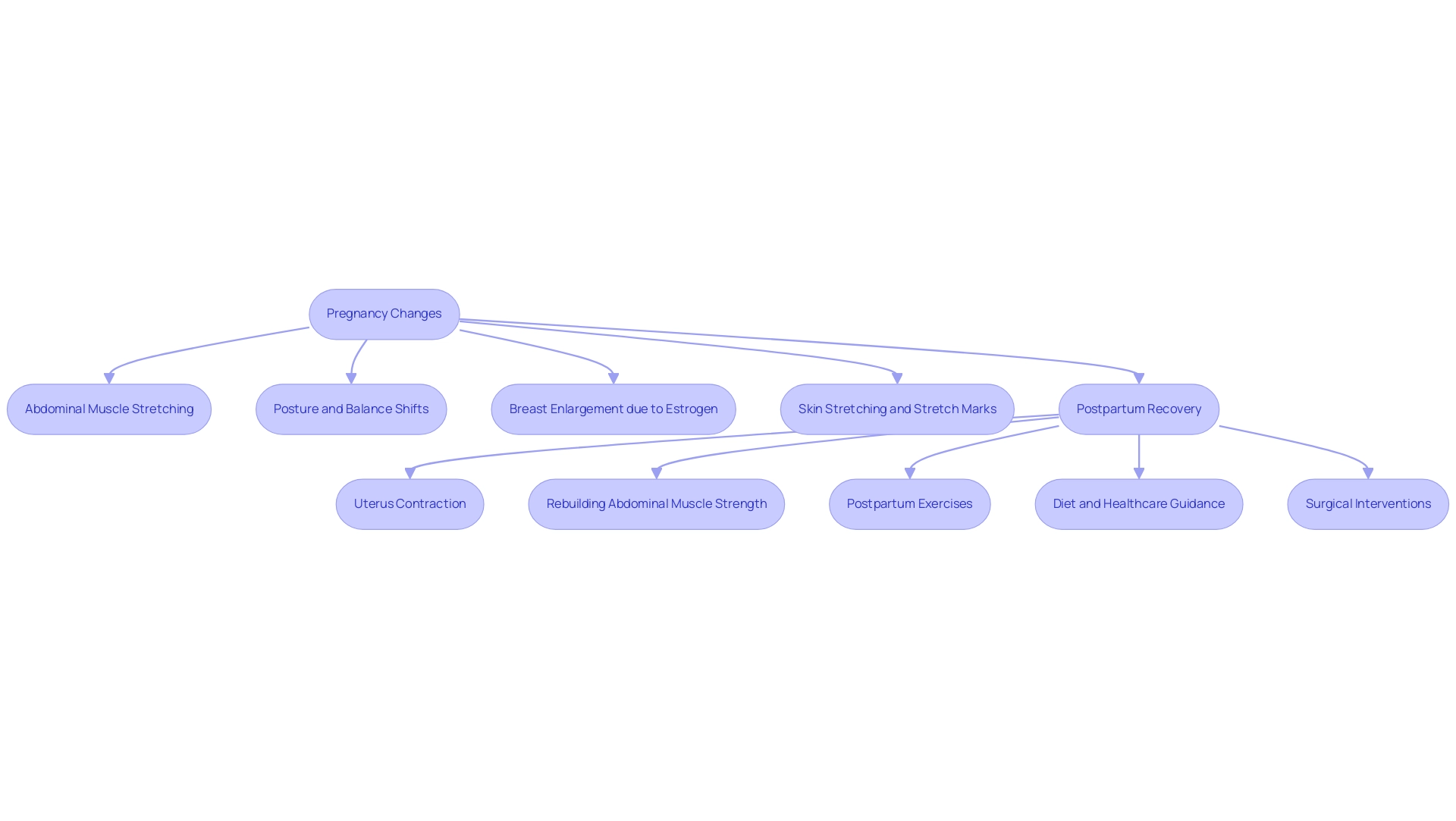
Health Implications of Belly Fat: Hormonal Changes and Risks for Women
Hormonal changes during menopause profoundly influence women's bellies, especially as estrogen levels decline. Research indicates a striking 105% increase in VAT VEGFA mRNA expression in postmenopausal individuals compared to their perimenopausal counterparts, highlighting the shift in fat distribution that often leads to increased fat in women's bellies. This particular kind of fat, especially visceral fat in women's bellies, significantly increases risks, including cardiovascular disease and metabolic syndrome.
Elaf Al-Saoudi aptly notes,
Changes in women's bellies, specifically in abdominal subcutaneous adipose tissue phenotype following menopause, are associated with increased visceral fat mass.
The National Institute for Health and Clinical Excellence released clinical guidelines in 2006, emphasizing the significance of managing obesity, particularly in postmenopausal individuals, as women's bellies can indicate unmanaged obesity which may worsen medical risks. Additionally, a case study titled 'Visceral Adipose Tissue Phenotype and Estimated Insulin Sensitivity' found that increased expression of HIF-1α and MCP-1 in women's bellies was linked to decreased estimated insulin sensitivity, underscoring the health risks associated with visceral fat.
Marino encourages individuals to embrace body changes during menopause and not to rely solely on scale numbers for self-esteem. To combat these challenges, it is essential for individuals to actively engage in regular physical activity, maintain a nutritious diet, and explore hormone replacement therapy under medical supervision as needed. Furthermore, by introducing customized corporate wellness initiatives, organizations can play an essential role in this process, offering education on healthy lifestyle choices and providing resources that empower individuals in their journeys toward well-being.
Specific outcomes from these wellness programs can include enhanced wellness metrics and increased employee engagement. By prioritizing these initiatives, HR Benefits Managers can make a meaningful difference in the lives of individuals navigating the complexities of menopause and its associated health risks, ultimately enhancing overall workforce productivity and cognitive performance.
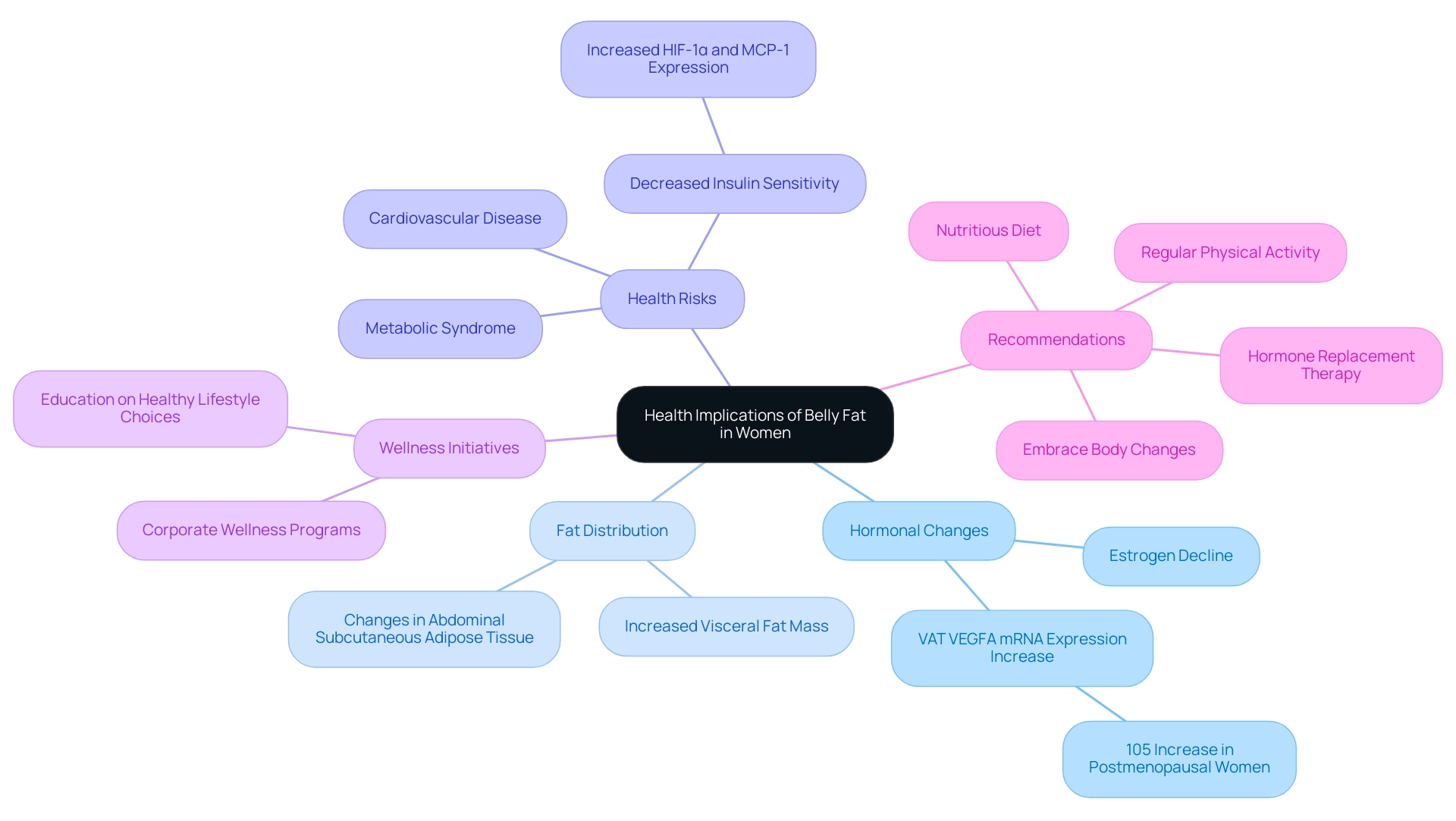
The Impact of Stress on Women's Belly Health
Chronic stress is more than just a mental burden; it can lead to significant hormonal imbalances that result in increased belly fat and digestive issues. When faced with stress, the body produces cortisol, a hormone that not only drives cravings for unhealthy foods but also promotes fat storage in the abdominal region. In fact, studies have shown that women experiencing chronic stress are at a heightened risk of accumulating belly fat.
A recent study discovered that 26.1% of participants indicated experiencing a poor teacher, emphasizing how adverse life events, including those in educational environments, can lead to stress and its related impacts on well-being. As stated by Shubhra Saraswat from the Department of B. Voc Food Processing at Dayalbagh Educational Institute, "The relationship between stress and health outcomes is important, especially in how stress can influence physical composition and overall well-being." To combat this cycle, it is crucial for women's bellies to embrace relaxation techniques such as:
- Mindfulness
- Yoga
- Regular physical exercise
These practices not only help in managing stress but also contribute to overall well-being. Furthermore, a case study titled 'Effects of Negative Life Events on Adiposity' explored how different types of life stressors impact body fat distribution, revealing that personal, peer, and family-related negative life events showed significant correlations with increased body fat, especially in school-related contexts. Organizations have a vital role in this journey by fostering a positive work environment that prioritizes mental well-being.
By offering resources like counseling services and stress management workshops, HR Benefits Managers can empower their teams to cope with stress effectively, creating a healthier and more productive workplace for everyone.
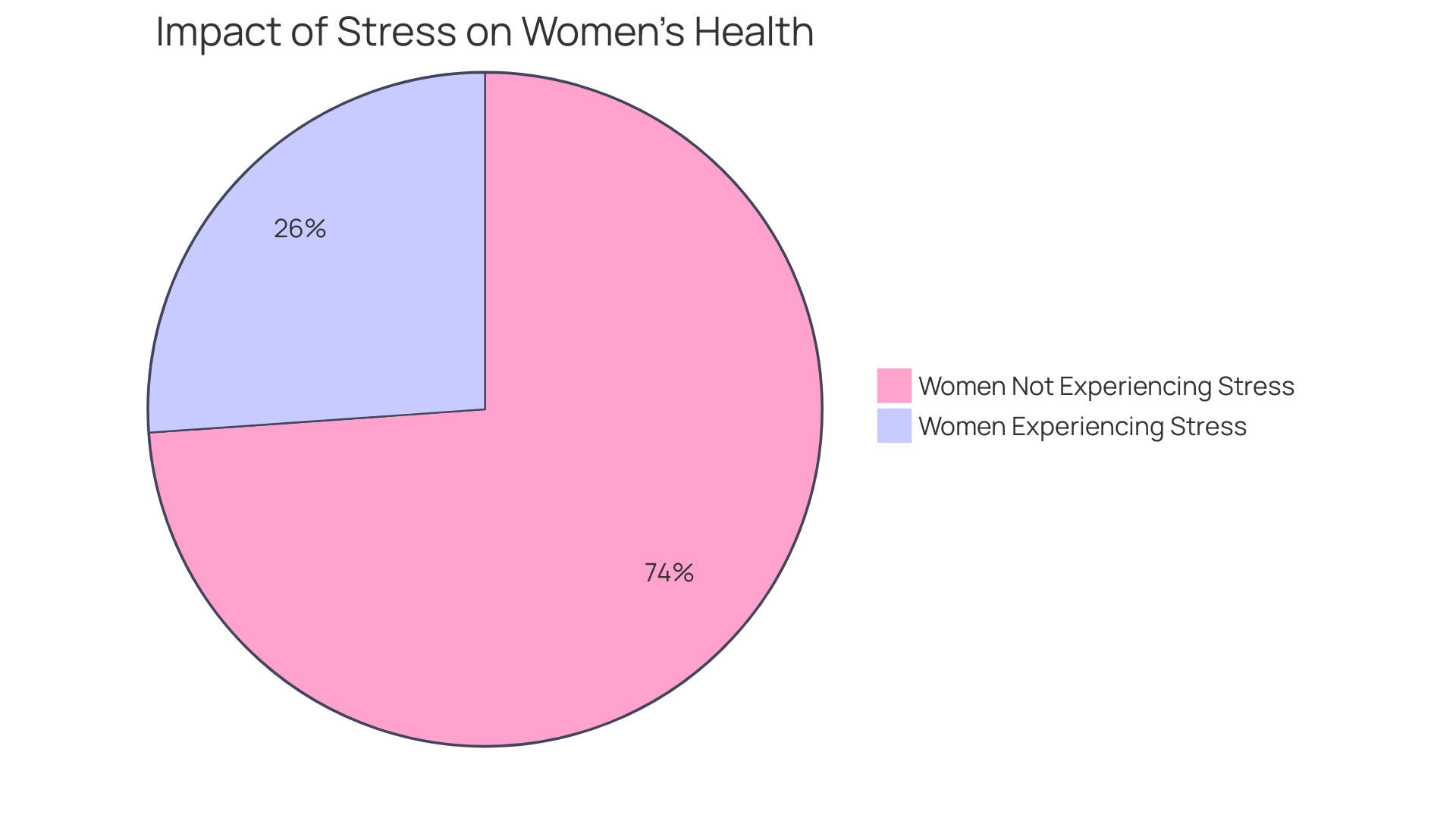
Nutritional Considerations for Belly Health
A balanced diet, especially one abundant in whole foods like fruits, vegetables, lean proteins, and healthy fats, is vital for promoting the health of women's bellies. Foods abundant in fiber, including whole grains and legumes, are essential for regulating digestion and enhancing the sensation of fullness, which can ultimately lead to reduced caloric intake. As reported by the National Center for Health Statistics, obesity rates among adolescents aged 12 to 19 have steadily risen from 1988–1994 to 2017–2018, emphasizing the importance of tackling issues related to nutrition.
Cheryl D. Fryar, M.S.P.H., from the National Center for Health Statistics, emphasizes, "This content is provided as a service of the National Institute of Diabetes and Digestive and Kidney Diseases (NIDDK), part of the National Institutes of Health," underscoring the importance of dietary impacts on wellness outcomes. Furthermore, having a waist size larger than 35 inches for women's bellies increases the chances of developing heart disease, cancer, or other chronic ailments, making it crucial to maintain a healthy diet. Incorporating omega-3 fatty acids from sources such as fish and flax seeds is also advantageous, as these nutrients assist in reducing inflammation and improving metabolic function.
To foster these healthy habits, organizations should consider:
- Offering nutrition workshops
- Providing healthy meal options in the workplace
- Encouraging employees to make informed food choices
By taking these steps, HR Benefits Managers can empower their teams to prioritize their well-being and embrace a healthier lifestyle.
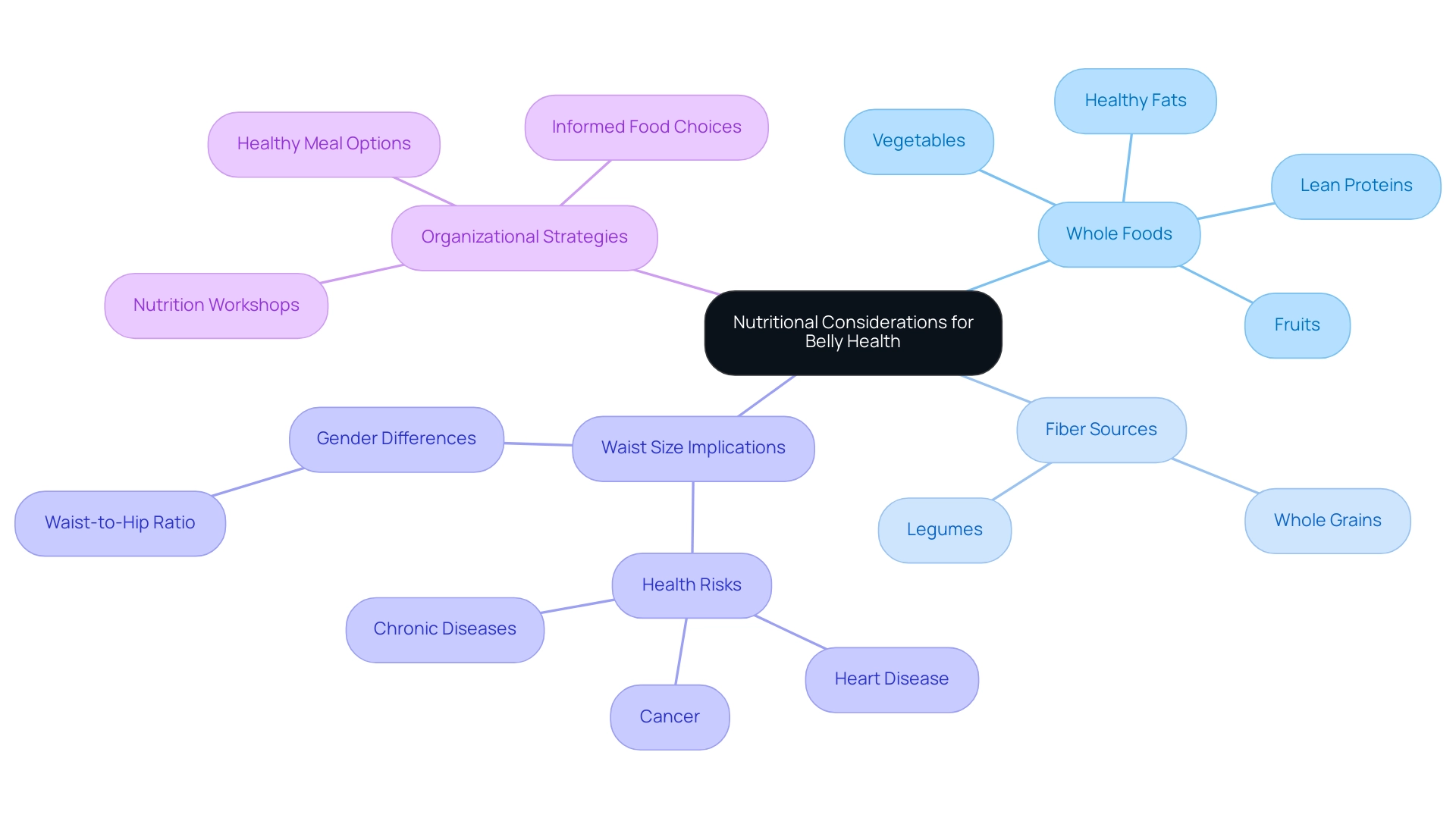
Exercise Strategies for a Healthy Belly
To enhance female well-being and promote a positive body image, it is essential to include both cardiovascular and strength training activities in fitness routines. Engaging in activities such as brisk walking, cycling, and swimming not only burns calories but also plays a significant role in reducing women's bellies. Furthermore, strength training exercises—think planks, squats, and targeted abdominal workouts—are vital for strengthening core muscles and enhancing posture.
The recommendation for women is to aim for at least 150 minutes of moderate-intensity aerobic activity each week, complemented by muscle-strengthening activities on two or more days. Organizations can promote employee fitness through initiatives such as:
- Gym memberships
- Fitness classes
- Wellness challenges
All of which foster a culture that prioritizes activity and well-being. Recent studies have shown that a commitment to exercise can significantly impact waist-hip ratios, with improvements noted across diverse groups; for instance, the waist-hip ratio for the active group (AG) decreased from 1.00 to 0.97, and for the control group (CG) from 0.98 to 0.95.
Additionally, in a study titled Zhang 2016, which involved adults with non-alcoholic fatty liver disease (NAFLD) and central obesity, participants—73 in the moderate exercise group, 73 in the vigorous-moderate exercise group, and 74 in the control group, with mean ages of 54.4, 53.2, and 54.0 years respectively—experienced notable benefits from structured exercise. As fitness expert Franziska Spritzler emphasizes, "These fats have been linked to inflammation, heart disease, insulin resistance, and the accumulation of fat in women's bellies in observational and animal studies." By inspiring action and promoting a supportive environment, HR Benefits Managers can lead the charge in prioritizing women's wellness through effective exercise strategies.

The Role of Sleep in Belly Health
Quality sleep is essential for the regulation of hormones that directly influence appetite and metabolism. Research highlights that insufficient sleep results in elevated levels of cortisol and ghrelin, hormones closely linked to weight gain and fat accumulation, particularly around women's bellies. Notably, Chaput et al found that the odds ratio for obesity associated with a sleep duration of 10 or fewer hours, compared to 12 or more hours, was 5.7 in boys and 3.2 in girls, underscoring the critical role of sleep in weight management.
Women should aim for 7-9 hours of quality sleep each night to enhance their well-being. To foster this, establishing a consistent sleep schedule and creating a restful environment are crucial steps. As one expert noted, 'The disparities observed between the adult and older adult population imply the influence of sleep on weight may be diminished by aging,' highlighting the need for tailored approaches.
Furthermore, a study conducted in China with 4,793 participants found an inverse association between sleep duration and both BMI and waist circumference, illustrating the real-world implications of sleep quality. Foresight Health Coaching understands the pivotal role organizations play in supporting sleep wellness and well-being. By promoting flexible work hours, providing designated nap spaces, and cultivating a culture that prioritizes work-life balance, companies can contribute to the well-being of employees.
Such initiatives not only improve the well-being of your workforce but also empower women to embrace body positivity regarding women's bellies and take charge of their wellness, ultimately leading to a healthier, more productive environment. Our corporate memberships include comprehensive pantry and nutrition services, in-person wellness talks, and white-glove service, all designed to support your employees' wellness journey. Additionally, access to our exclusive health and wellness app allows for continuous engagement and support.
By implementing these services, organizations can effectively promote a culture of wellness and empower their employees.
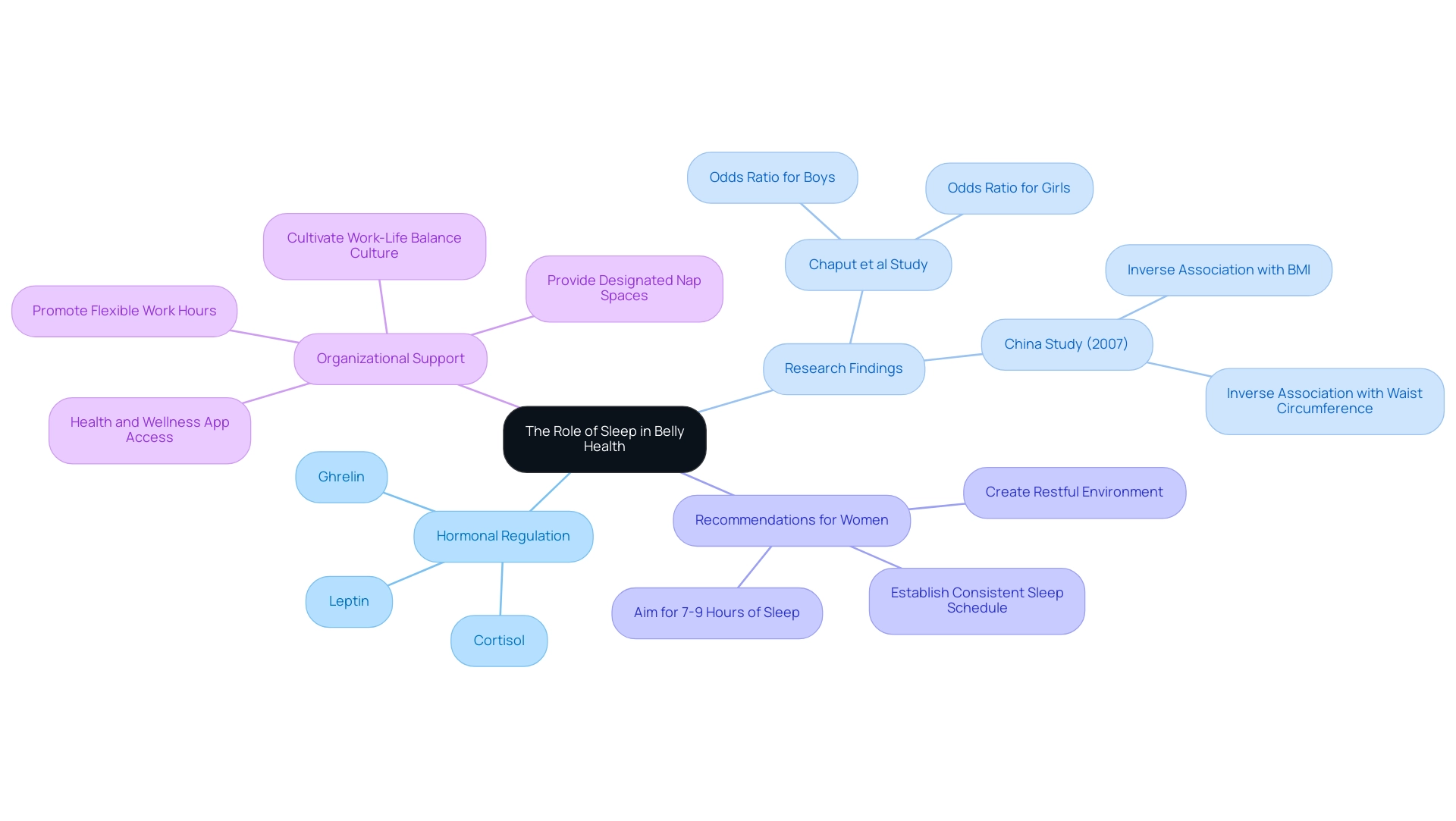
Conclusion
The journey through womanhood presents unique challenges and transformations that significantly impact belly health. From the remarkable changes experienced during pregnancy and postpartum recovery to the profound effects of hormonal shifts during menopause, understanding these phases is essential for fostering well-being. Addressing factors such as stress, nutrition, exercise, and sleep reveals the importance of a holistic approach to health that empowers women to embrace their bodies at every stage.
Organizations have a pivotal role in this journey. By prioritizing wellness initiatives and providing resources tailored to women's health needs, HR Benefits Managers can inspire their teams to take charge of their well-being. Implementing programs focused on:
- Physical activity
- Nutritional education
- Stress management
not only enhances individual health metrics but also cultivates a thriving workplace culture.
Ultimately, creating a supportive environment that addresses the complexities of women's health can lead to improved productivity and a more engaged workforce. As women navigate their unique life stages, the commitment to prioritizing belly health and overall wellness will empower them to thrive, both personally and professionally. Now is the moment to take action and champion the well-being of women in the workplace, ensuring they feel supported and empowered throughout their health journeys.
Frequently Asked Questions
What physical changes occur in women's bodies during pregnancy?
During pregnancy, women's abdominal muscles stretch to accommodate the developing fetus, which can lead to noticeable shifts in posture and balance. Hormonal changes, particularly increased estrogen, cause the breasts to enlarge in preparation for milk production. Additionally, many individuals may experience stretch marks as the skin stretches.
What are some potential complications during pregnancy?
One potential complication during pregnancy is placenta accreta, which occurs when the placenta invades the uterine wall during implantation, posing risks to both the mother and the fetus.
How does the body recover after childbirth?
After childbirth, the uterus contracts back to its pre-pregnancy size, and the abdominal muscles gradually rebuild their strength. Gentle postpartum exercises, a balanced diet, and guidance from healthcare providers are essential for recovery.
What benefits do postpartum exercises provide?
Postpartum exercises enhance abdominal muscle strength and support overall well-being, helping individuals embrace their bodies during the transitional phase after childbirth.
How does menopause affect women's bellies?
Menopause leads to a decline in estrogen levels, which significantly influences fat distribution, often resulting in increased visceral fat in women's bellies. This change is associated with higher risks of cardiovascular disease and metabolic syndrome.
What are the health risks associated with increased visceral fat?
Increased visceral fat in women's bellies is linked to decreased insulin sensitivity and higher risks of obesity-related medical issues, such as cardiovascular disease and metabolic syndrome.
What recommendations are made for managing body changes during menopause?
It is recommended that individuals engage in regular physical activity, maintain a nutritious diet, and explore hormone replacement therapy under medical supervision if needed.
How can organizations support individuals navigating menopause?
Organizations can implement customized corporate wellness initiatives that provide education on healthy lifestyle choices and resources to empower individuals in their journey toward well-being, which can enhance overall wellness metrics and employee engagement.




